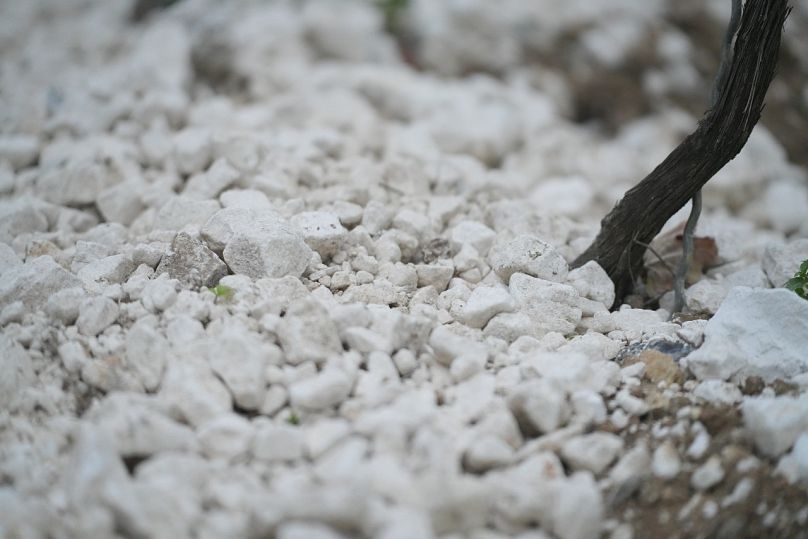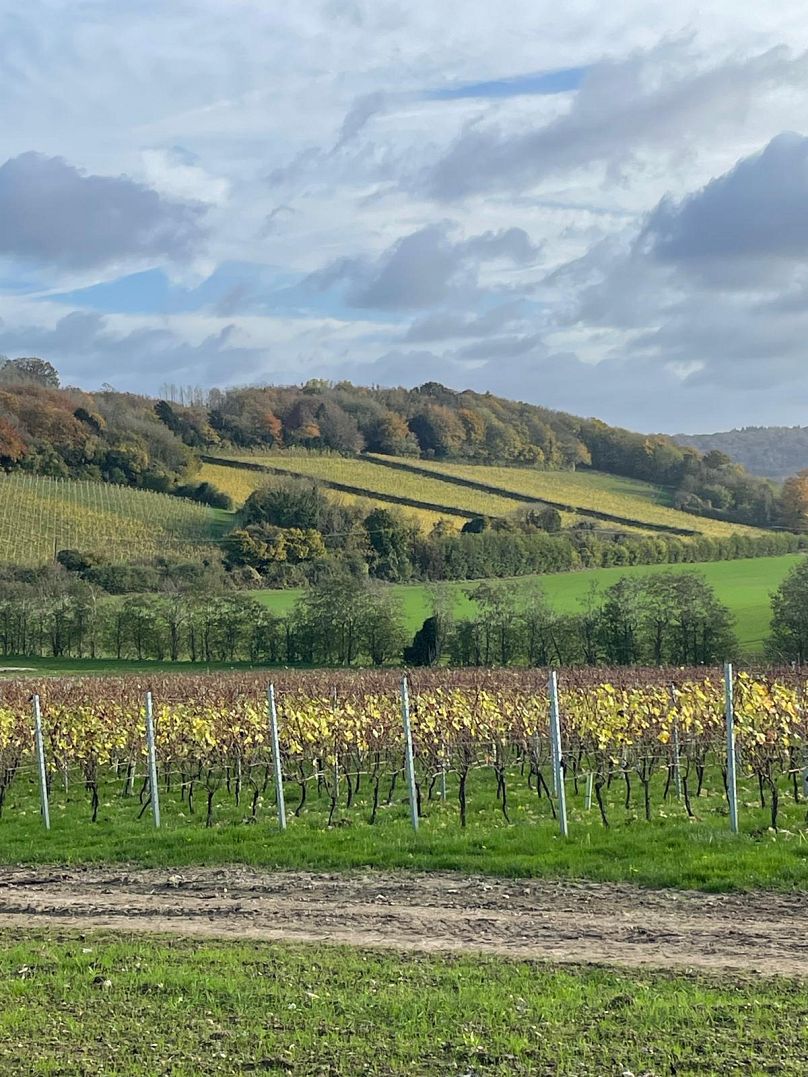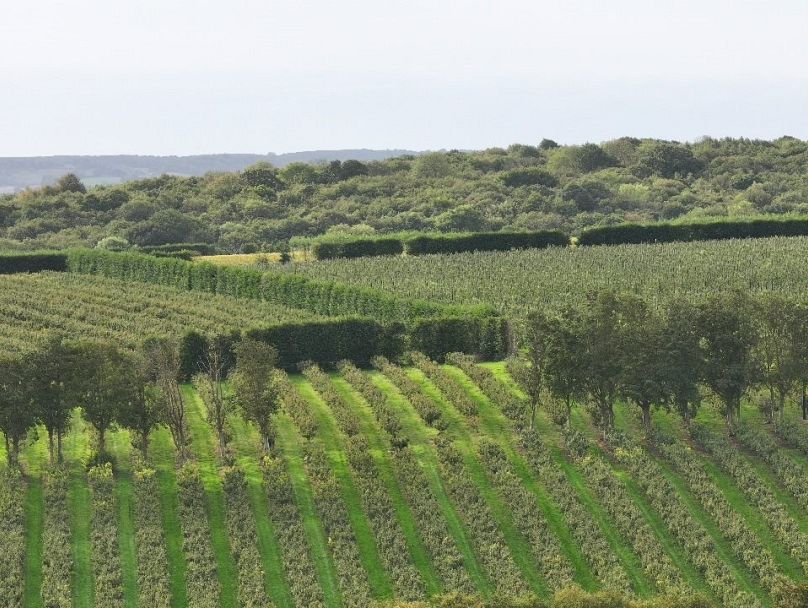While the English might grumble and the French might shrug, the Anglo-French partnership has existed for many centuries, albeit... not very frequently.
Of course, we all remember how the tribes of southern England came to the aid of their friends across the English Channel when Julius Caesar decided to invade Gaul?
Surely, the subsequent two thousand years have unfolded a bit differently, but you must recall the Channel Tunnel. Handshakes, applause, champagne toasts?
An incredible engineering feat and a timely reminder that while pounds may never become euros, the past can remain in the past.
The majority of the history between these two nations revolves around political changes. From the Norman Conquest to the Entente, social factors have alternately brought France and England closer together and pushed them apart. However, the latest instance of cooperation is driven by factors beyond politics and society: climate change.
Champagne represents the crème de la crème and the mousse de la mousse of sparkling wines. It is a legally protected institution and a source of immense pride, woven into centuries of history and culture. The product is influenced by numerous factors, but the simplest explanation relates to climate and terroir (an untranslatable French term that, among other things, refers to the land where the sacred vitis vinifera vines are planted).
Terroir
First and foremost, the Champagne region is situated approximately as far north as is traditionally effective for winemaking, with optimal parameters lying between 30 and 50 degrees in both hemispheres. Reims, the capital of the region, is located at 49.15 degrees north latitude. This cool climate actually benefits sparkling wine production, as winemakers require very high acidity in the grapes to create the right structural conditions for traditional method production.
Secondly, the soil in this part of France contains a significant amount of chalk, which helps maintain the freshness and minerality that are again ideal elements for sparkling wine production. Indeed, top-tier Champagne - Grands Crus - is produced almost exclusively from sites with the highest chalk content.

Chalk is excellent for drainage while also capable of retaining moisture during droughts. When you combine these elements, you get the perfect conditions for producing Champagne. But if the climate changes, problems arise. Grapes are becoming increasingly ripe, even in relatively cool years; the Côte de Blanc vineyards in the south are warming up; weather systems are becoming less predictable.
The question arises: how can one of the most successful industries in the world protect itself in the future?
The answer lies in the lands located at the other end of the famous Channel Tunnel. Kent and the southeast of England are rapidly becoming known for sparkling wine production, which is now the subject of the latest heartfelt agreement between England and France.

Getting Better and Better
English sparkling wine is experiencing a renaissance. Over the past decade, the industry has significantly improved, and thanks to increased production and scale, prices have dropped to competitive levels, while quality has undoubtedly risen.
But what about the terroir?
It just so happens that the soils in many areas of Kent, Sussex, and Surrey have chalk content comparable to that of the sacred soils of Champagne, as this territory is part of the same Paris Basin where thick chalk layers formed from plankton fossils 60-100 million years ago.
Moreover, the climate in southeast England is similar to that of Champagne 50 years ago, while a one-degree increase in temperature in northeastern France has caused grapes to dry out due to excessive heat.
This incredibly similar terroir has attracted one of the largest players in the sparkling wine world: Champagne Taittinger.
Taittinger Investments
The connections between the famous Taittinger house and this part of Kent mark the genesis of an initiative based on Anglo-French cooperation, thanks to the long-standing friendship between Pierre-Emmanuel Taittinger and British winemaker Patrick McGrath. Taittinger's father, Jean, was the mayor of Reims—the capital of Champagne—and in 1962, he established a twinning agreement with Canterbury. Just a few miles from the cathedral city of Kent, a chalk-rich site with excellent south-facing slopes and a low elevation was discovered.
McGrath heads Hatch Mansfield, which has been importing Taittinger to the UK for several decades.
"It's clear that Hatch Mansfield and Taittinger have been working together for many years," confirms Patrick McGrath's daughter, India McGrath, brand manager of Domaine Evremond. "They will be our distributor agents, which is quite unique because, evidently, most English wine brands do not have agents since they do not import wine. They simply sell wine directly from the winery. We, however, are going to give our agency to Hatch Mansfield, which will leverage their distribution connections in trade."
Although the initial focus is on the British market, utilizing an already established distribution network is invaluable for export sales, and Taittinger has agents worldwide. Perhaps this is why the estate is confident it can produce so much wine. McGrath states that the goal is to produce about 400,000 bottles.
The Estate
Domaine Evremond is situated in the countryside near the 15th-century village of Chilham, not far from Canterbury. Located at 52.1 degrees north latitude, it lies beyond the historical parameters for winemaking, but climate change is rewriting all the textbooks. And while the French may be among the last to consider purchasing English sparkling wine, they know what it takes to make it and continue making it when their traditional region is no longer suitable. Sending people to Mars to escape a burning planet may be a stretch, but you get the gist.
The estate spans 125 hectares (almost half of which is under vine) and is named after the curious 17th-century figure Charles Sainte-Évremond, symbolizing him. The poet, literary critic, and soldier found himself an unwelcome guest in his native France despite his military achievements after he spoke out sharply against his government’s foreign policy following the Franco-Spanish War. He fled to England, but notably, he brought Champagne with him. No wonder Charles II decided to grant him residency and offer him a pension.
He can be found in Poets' Corner at Westminster Abbey, where he stands alone as the only Frenchman, and beneath his marble bust lies his emblem—a five-leaf flower, or sabelline. This symbol is now used on the estate's first wine, Classic Cuvée.
The cuvée, which will be released in March 2025, is aged for three years on its lees and is a blend of three traditional grape varieties used for blending in Champagne: Pinot Noir (55%), Chardonnay (35%), and Pinot Meunier (10%). It will retail for £50 (approximately €67).
Expectations for the Grapes?
"We have been around for 10 years and haven't released a single wine yet," says McGrath. "Therefore, British consumers, especially the wine scene here in Kent, have high expectations for the wine itself, for its quality: Ten years of work, one cuvée, it should be good."
Another advantage of the established distribution network is time. With the lion's share of the sales headaches already resolved, India McGrath and her team can focus less on other key projects.
"Now we can devote quite a bit of time to thinking about visitor experiences, how to offer something truly premium, and how to grow the business," McGrath explains. "The space is vast, and the view is stunning, so visitors will surely want to linger here after tastings or tours."
There are also other Anglo-French elements at play in the overall project. Mark Gaskin, who initially owned the fruit orchards where the company planted its first 20 hectares, continues to cultivate his old lands but does so in collaboration with vineyard manager Christelle Rinvile. Her nearly ten years of experience managing Taittinger's vineyards, combined with Gaskin's unique knowledge of the immediate terroir, create a wonderful partnership.

This land is no stranger to horticulture, as evidenced by an engaging explanation from landscape design guru Marianne Boswall about how topography influences not only design but also biodiversity. For instance, the decline of turtledoves in the UK has inspired an initiative to bring them back and create ideal habitats for them.
"A tremendous amount of work has been done to preserve turtledoves, and we have set up bee hives," McGrath proudly states. "We have a vast area of meadows with wildflowers for which the government pays us subsidies. We have replanted all the hedgerows that were cut down and planted many trees